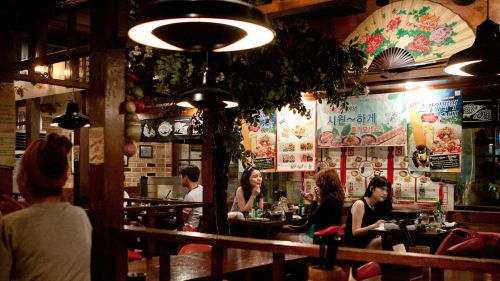Food Delivery in South Korea Stresses Small Restaurants

A rise in demand for food delivery is outpacing the capacity of delivery workers, leading to concerns about food price increases.
Food Delivery in South Korea
With the COVID-19 pandemic shifting education, work, and nearly every other interaction into cyberspace, another important industry is also making the conversion online: food delivery. For South Korea, a country already steeped in delivery apps, orders are increasing daily. However, these increasing orders are also serving as a catalyst for new dilemmas.
Although the social distancing mandate in Korea dropped to Level 1 for the first time in 2 months, there are still public restrictions in place, which is contributing to the steady increase of online delivery orders. Since early 2020, South Korean food delivery industry’s sales have increased by a staggering 180 percent.
According a poll conducted by Gallup Korea, in 2019, 18 percent of citizens reported using a delivery service through a phone app at least once a month, and 34 percent did so at least once a year. The frequency of the usage of delivery services in 2020 increased, as 23 percent of citizens used delivery apps at least once month, and 42 percent did so at least once in the year. Moreover, Korea Logistics News reports that nearly 60 percent of those who received food deliveries ordered through an online app. Thanks to its popularity and convenience, the Korean delivery app market size is approaching 5 trillion won, or nearly 4 billion USD.
However, the increase in orders—reportedly 26 percent from July to August—is not being matched by a corresponding increase in those making the deliveries. Despite increasing wages, the number of delivery workers increased by only 8 percent in the same period, leading to shortages of delivery workers. There is now concern that without commensurate increases in delivery workers, rising demand for deliveries could potentially lead to an increase in food prices to compensate.
In addition, privately-owned restaurants must pay fees to the delivery apps, and 79 percent of these owners state these fees are “excessively large,” as reported by the Seoul Metropolitan Fair Economy Council. Although owners benefit from a wider audience through the advertisement provided by the app companies, these fees may ultimately drag down profitability in the already-tough restaurant business. These fees include, but are not limited to providing customers with free side menus when they leave reviews, promotional discounts, and assuming part of the delivery cost.
These types of concerns are not limited to South Korean restaurant and delivery industries. As in Korea, just a handful of apps in the United States make up nearly 95 percent of the delivery market. Restaurants have almost no choice but to pay a commission fee between 15 to 30 percent per order. Despite possible drawbacks, these third-party app delivery services are deemed a "necessary evil," especially with the ongoing COVID-19 pandemic.

